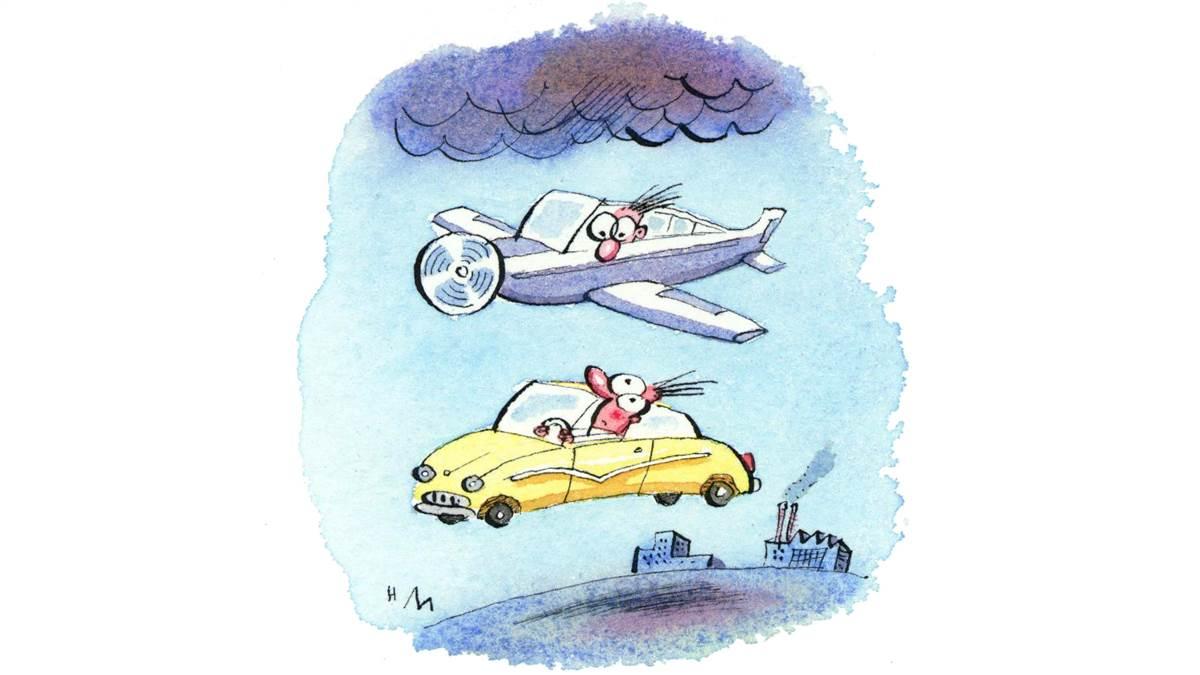Checkride-ready
 See how you measure up to FAA standards with questions from the AOPA Pilot Information Center.
See how you measure up to FAA standards with questions from the AOPA Pilot Information Center.
1. What is it often called when a pilot pushes his or her capabilities and the aircraft’s limits by trying to maintain visual contact with the terrain in low visibility and ceiling?
A. Mindset.
B. Peer pressure.
C. Scud running.
2. FAA advisory circulars containing subject matter specifically related to airmen are issued under which subject number?
A. 60
B. 70
C. 90
3. In the Northern Hemisphere, if an aircraft is accelerated or decelerated, the magnetic compass will normally indicate
A. a turn momentarily.
B. a turn toward the south.
C. correctly when on a north or south heading.
4. The correct method of stating 4,500 feet msl to air traffic control is
A. “four point five.”
B. “four thousand, five hundred.”
C. “forty-five hundred feet msl.”
5. What exception, if any, permits a private pilot to act as pilot in command of an aircraft carrying passengers who pay for the flight?
A. If a donation is made to a charitable organization for the flight.
B. There is no exception.
C. If the passengers pay all the operating expenses.
Ace
 Can you correctly answer these questions from retired TWA captain and 28,000-hour pilot Barry Schiff?
Can you correctly answer these questions from retired TWA captain and 28,000-hour pilot Barry Schiff?
6. A pilot needs to make a takeoff in the shortest possible distance. He should load the airplane so that it has
A. an aft center of gravity.
B. a mid center of gravity.
C. a forward center of gravity.
D. It does not matter.
7. True or false? An aircraft magneto generates AC (alternating current) electrical power.
8. Why does it become progressively easier to overstress an airplane as the center of gravity moves aft?
9. A pilot is gliding at the optimum indicated glide speed and then enters a turn. To maintain a maximum-range glide during the turn, glide speed should:
A. be increased.
B. be decreased.
C. remain the same.
D. Cannot be determined.
10. A pilot flying an airplane with a fuel-injected engine shuts down after a long flight for a short ground stop. What can she do after arrival to reduce the possibility of being challenged with hot-start difficulties prior to her next departure?
Test Pilot Answers
1. The correct answer is C. Scud is defined as loose, vapory clouds driven swiftly by the wind. The act of scud running occurs when a pilot tries to maintain visual contact with the terrain, generally at low altitudes while low ceilings, visibilities, and/or instrument conditions exist. Many times, this practice has led to inadvertently entering the clouds with a subsequent loss of aircraft control. (Pilot’s Handbook of Aeronautical Knowledge, Chapter 2)
2. The correct answer is A. Advisory circulars are not regulatory, but they do provide additional guidance to expand on and help clarify the regulations. The 60 series of advisory circulars, related to Part 61 of the regulations, addresses the topics of pilot training and airman certification. (www.faa.gov)
3. The correct answer is C. Changing aircraft speed does not have any effect on compass indications while flying on north or south headings. There are, however, northerly and southerly turning errors, both to and from, and acceleration/deceleration errors, primarily on easterly and westerly headings. (Pilot’s Handbook of Aeronautical Knowledge, Chapter 8)
4. The correct answer is B, and is the norm for numbers under 10,000. For higher numbers such as 12,500, the correct enunciation is one two thousand, five hundred. (Aeronautical Information Manual 4-2-8 and 4-2-9)
5. The correct answer is A. FAR 61.113 permits a private pilot to make a flight for charity, provided the requirements of FAR 91.146 are met prior to that flight. Additionally, a private pilot who has less than 500 hours may not conduct any charity flight.
6. The correct answer is A. An aft center of gravity reduces stall speed, which reduces liftoff speed, which reduces takeoff distance.
7. True. Magnetos are independent of the electrical systems of light airplanes, which typically produce DC (direct current).
8. The pulling force on the control wheel required to create a given G-load becomes less as the center of gravity moves aft. At an extremely aft center of gravity, excess Gs can be “pulled” using only the fingertips.
9. The correct answer is A. Turning results in an increased load factor, which increases the effective weight of the airplane, which requires a higher glide speed.
10. Allow engine heat to escape by opening the cowling and leaving it open while parked. If the cowling does not open easily, open the oil-access door. If practical, park into the wind.
